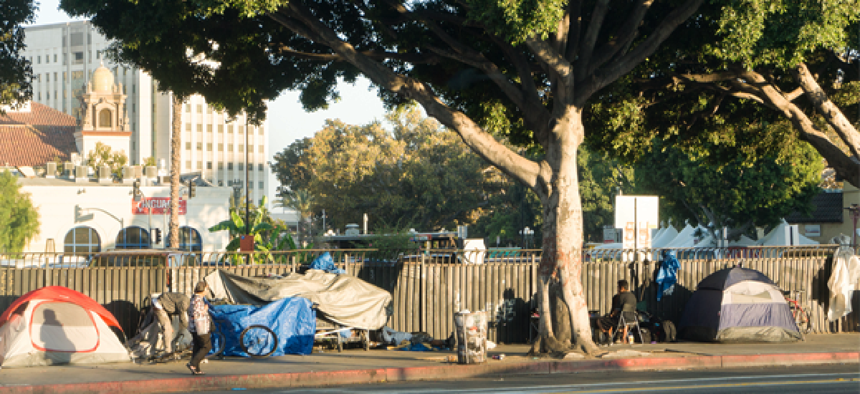Los Angeles maximizes the data from its annual homeless count


Connecting state and local government leaders
The Greater Los Angeles Homeless Count tracks the county and city populations annually to qualify for federal funding.
For the past three winters, the Los Angeles Homeless Services Authority has taken the lead in counting the city and county’s homeless populations. Data from that census informs federal, state and local assistance funding and policies, giving officials a better understanding of which services are most needed where.
The annual count has four components, with the largest effort consisting of a three-night event where 8,000 community volunteers are tasked with visually counting the area's homeless. Besides the overnight census, LAHSA counts homeless people in shelter and institutions and young people living the street. It also conducts a demographic survey that asks about the onset and duration of homelessness.
The volunteers are split into teams and sent out at night with maps and tally sheets to count the number of homeless individuals in designated census tracks. In the morning after each of the three nights, the LAHSA reviews the tally sheets to determine who should be added from the sheets into its electronic database and verifies that the information is entered correctly.
Once the overnight census is complete, the data is sent to the University of California-Los Angeles, where researchers combine the information from the overnight count with data taken from shelters and institutions, demographic surveys and a youth count survey. All of this information is then sent to the federal Department of Housing and Urban Development, which uses the information to distribute funds from its Continuum of Care program.
“If you part of the CoC program, you are required to conduct a census every other year,” JuHyun Sakota, interim associate director of data evaluation at LAHSA, told GCN. “We are one of the rare communities that conducts counts annually.”
LASHA started counting the homeless population in 2005. In 2015, the organization decided to make the count an annual process and added a youth count to assess the number of unsheltered youth living in Los Angeles between the ages of 18 and 24. Counting young adults separately was made a HUD baseline requirement starting in 2017.
For the demographic survey, LAHSA hires full-time surveyors and USC students to ask homeless individuals a specific list of questions during the daytime. Approximately 5,500 surveys are conducted each year over the course of a two-month period. For this year, the period lasts from Dec. 15 to Feb. 15 to coincide with the homeless count period.
LAHSA uses the information from all of counts to make decisions on how to distribute resources and funding for different jurisdictions across the county. LASHA makes the data available for the city's council districts and county service planning areas.
The data from the 2017 Greater Los Angeles Homeless Count shows the number homeless on a given night is continuing to rise. The total number of homeless people across the county was 57,794 in 2017, a 23 percent increase from 2016.
“In the past three years, we have seen an increase in the number of people experiencing homeless for financial reasons,” Sakota said. “Unlike New York or the east coast where it is too cold to be outside, you see a lot of people living on the street under hard living conditions.”
According to HUD’s 2017 Annual Homeless Report, Los Angeles County has the second largest homeless population in the country after New York City.
NEXT STORY: ICE taps into license plate recognition tech




